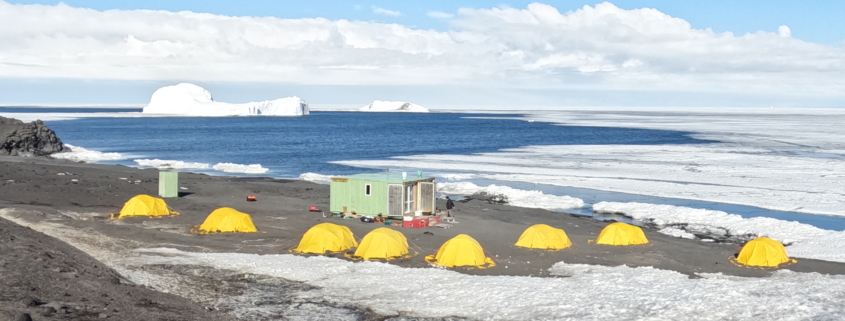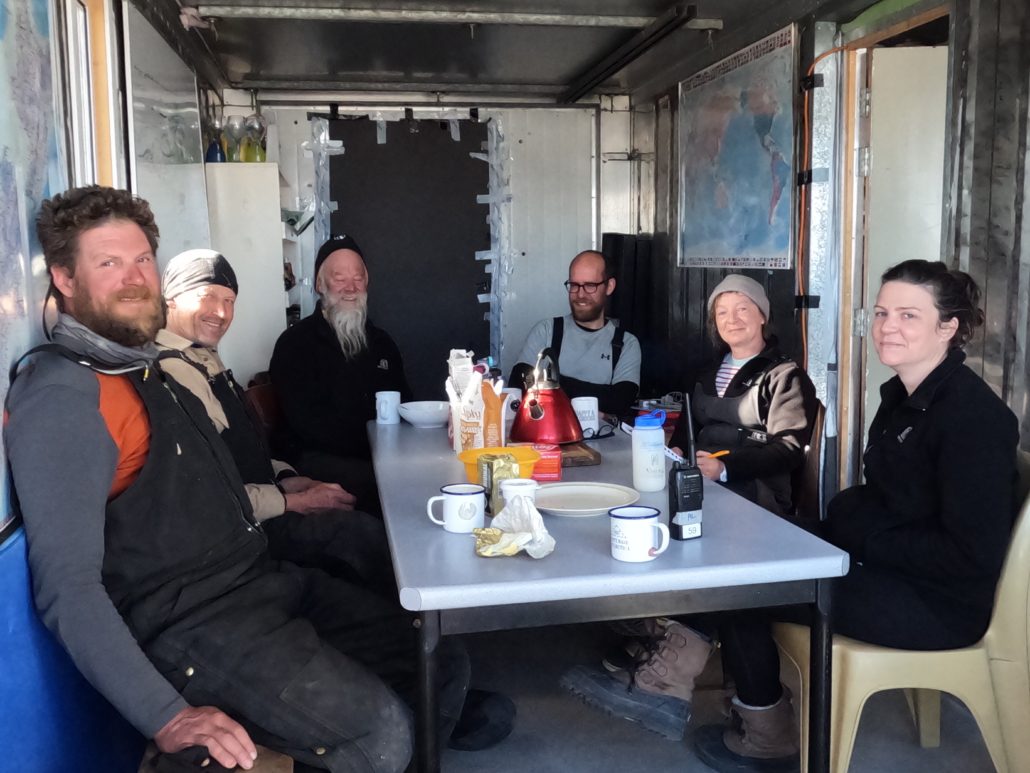A typical day in the field
Antarctic Heritage Trust Conservator Belinda Hager explains how the On Ice team preserves original material and reduces environmental contamination at Shackleton’s Nimrod hut, Cape Royds
Our working day starts with a half-hour meeting at 7.30am. We take turns chairing the meeting, running through work and camp tasks for the day, any scheduled visits, and health and safety and/or environmental issues to be addressed.
Camp duties involve taking daily turns at cooking and ‘housework’ like refueling and collecting ice to melt for washing water (there is no showering in the field, so it’s a treat to ‘bathe’ using water in a bowl). There are three meals a day: first lunch at 11-11.45am, second lunch at 3-3.45pm, and finally dinner, after work ends at 7pm.
Morning meeting 15 January 2022. Credit: AHT/Belinda Hager
At 11am our team leader radios in to Scott Base for the daily ‘sked’ (schedule), providing and receiving information about the weather, our wellbeing, planned visits and headlines from NZ and around the world. This season’s request was for good news stories; I can appreciate the motive, but if we were already feeling very far-removed from our normal lives, hearing about celebrity career plans or saved puppies in New York, while sitting in Antarctica, just feels downright bizarre!
After dinner the cook gets a break when others do the dishes. On mild evenings we spend a lot of time outside, watching the wildlife – penguins, seals, whales (orca and minke) – and the shifting light on the land and seascapes. Thinking about bedtime when the sun is still high in the sky was challenging at first, but we’ve settled into an ‘early to bed, early to rise’ routine. The work programme was planned months ago, so we have to make every minute count to get through it during our month in the field. First stop back at Scott Base? The shower!
Field camp, Cape Evans. Credit: AHT/Belinda Hager





